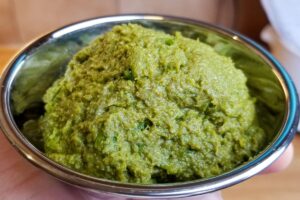How to make a green curry paste
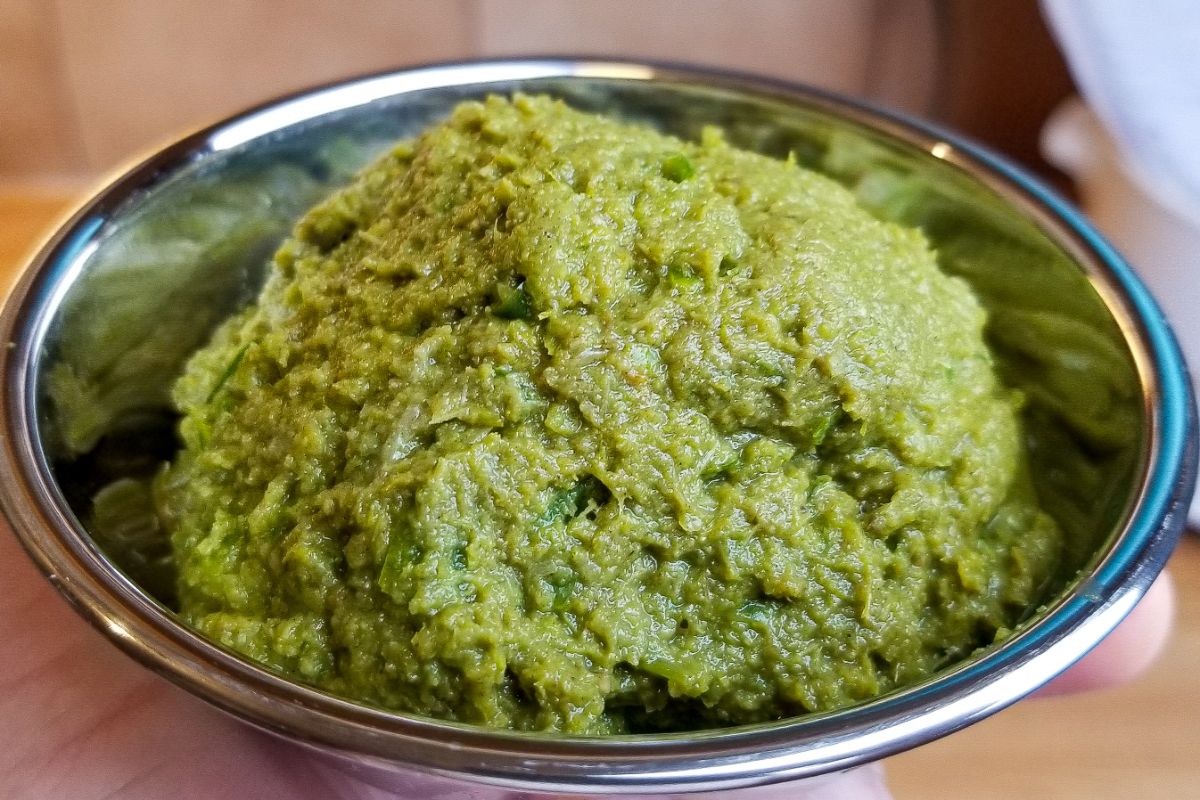
Making a Thai-style curry paste can be a bit daunting but it really isn’t complicated and will yield much better results than the canned pastes you find in the supermarket. This curry paste can be used to make many different types of green curries, including this version with chicken and eggplant. The trick to making a good curry paste is having the right ingredients, the right equipment and having a bit of patience.
Ingredients
As the produce that we have available here in the US is very different from what you can find in Thailand, it can be a bit difficult to source some of the necessary ingredients. Some items, such as the turmeric and galangal, can be purchased frozen whole and still yield good results. Cilantro roots are just the roots of regular cilantro. Unfortunately many US supermarkets remove the roots before selling them. If you can’t find cilantro with the roots attached, you could just use cilantro stems.

Equipment
The preferred tool for making a curry paste is a granite mortar and pestle. They are heavy and the surfaces are rough so that you can use the weight and roughness of the pestle to do most of the work for you. Most other styles of mortar and pestle will not do a very good job because of the weight and texture of the materials they are made of.
You could make this paste in a food processor but unless it has very sharp blades, your paste will likely not be as smooth as when it is made in a mortar and pestle. This will affect the texture of your finished curry. A blender could also be used but you may need to add a bit of liquid in the form of water, stock or coconut milk to help the paste blend. This will give you a slightly different texture than a paste made by hand but can yield decent results.
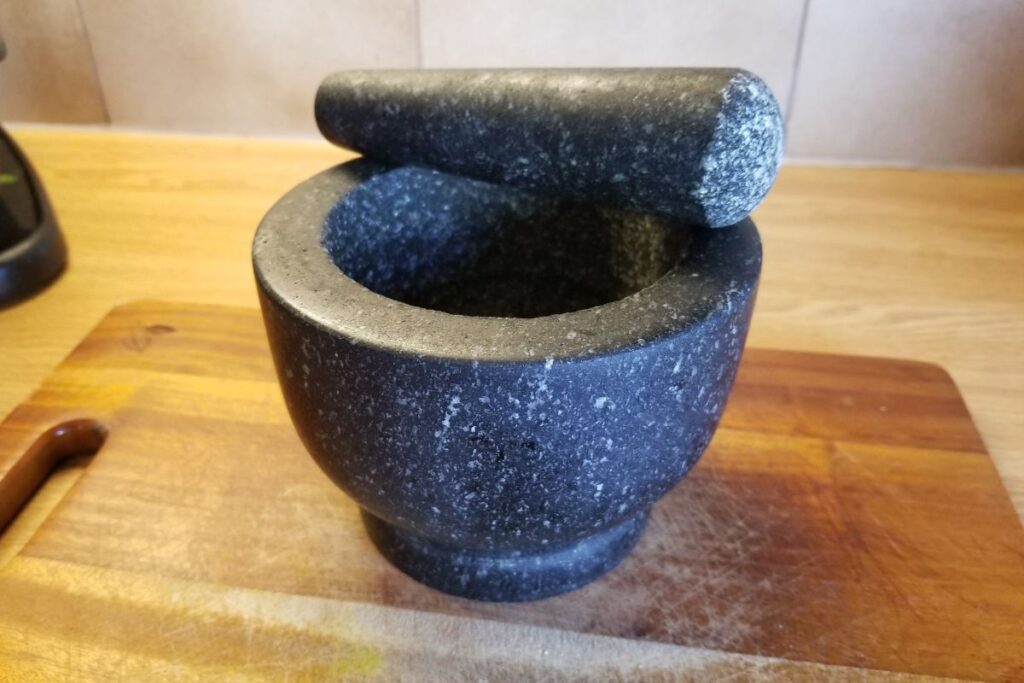
The method
Make sure you cut your ingredients up onto smaller pieces before pounding. This will reduce the amount of effort necessary to break up the vegetables. It also helps to cut fibrous vegetables such and lemongrass and galangal across the grain.
Pounding curry paste in a mortar and pestle can sometimes lead to spicy bits of paste jumping out of the mortar and landing on your hands, arms or even face. This can irritate your skin and eyes. To mitigate this I like to do a few things:
- Add the chilis near the end of the pounding process. This will reduce the amount of time you will be pounding the irritating chilies.
- Wear gloves. Latex gloves will keep your hands from getting irritated from the peppers.
- Use the hand you are not pounding with to help cover the opening of the pestle. You could even hold a small piece of plastic wrap over some of the opening. This will keep bits of paste from flying up at your face or arms.
- Never have your face directly above the mortar and pestle as this is where the paste is most likely splash you.
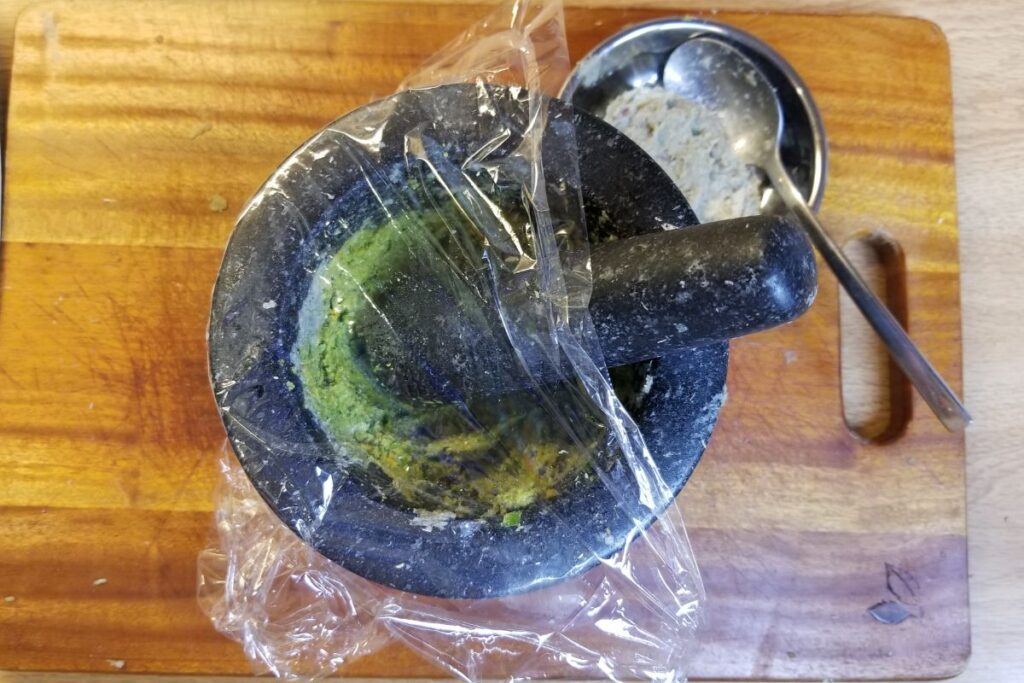
Take your time
Properly pounding a curry paste by hand takes time. Be patient, relax, have a beer. Do not attempt to make curry paste when you are in a rush, this is not a quick weekday 30-minute meal. If you are pressed for time and trying to rush you will likely end up frustrated and with an inferior curry paste.


Green Curry Paste
Equipment
- Thai-style granite mortar and pestle
Ingredients
- 2 grams coriander seed 1 tsp.
- 2 grams white peppercorns 1 tsp.
- 1/2 gram cumin seed 1/4 tsp
- 22 grams thinly sliced fresh lemongrass, tender parts only 3 Tbsp.
- 1 pinch salt
- 15 grams peeled and thinly sliced galangal 1 Tbsp.
- 7 grams cleaned and chopped cilantro roots (or stems) 1 Tbsp
- 25 grams roughly chopped garlic 2 Tbsp.
- 35 grams roughly chopped shallot 3 Tbsp.
- 16 grams sliced green Thai bird chili 2 Tbsp.
- 22 grams seeded and sliced serrano chili 2.5 Tbsp.
- 3 grams sliced turmeric 1 tsp.
- 10 grams Kapi (thai shrimp paste) 1 tsp.
Instructions
- Pound the coriander seed, white pepper and cumin in the mortar and pestle to yield a powder.
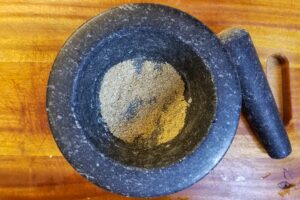
- Add the lemongrass and the pinch of salt. Pound until smooth. (The salt acts as an abrasive)
- Add galangal and pound until smooth
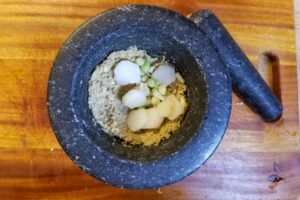
- Add cilantro roots and pound until smooth
- Repeat with the rest of the ingredients, pounding ingredients one or two at a time in the order shown in the ingredients list. If the mortar gets too full, remove a portion of the paste once it is smooth and then combine everything at the end when everything is smooth.
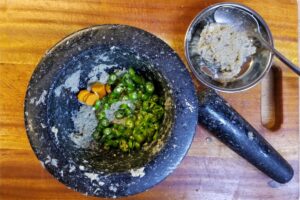
- Paste is finished when everything is relatively smooth.
- Paste will keep for 3-4 days in the fridge.
